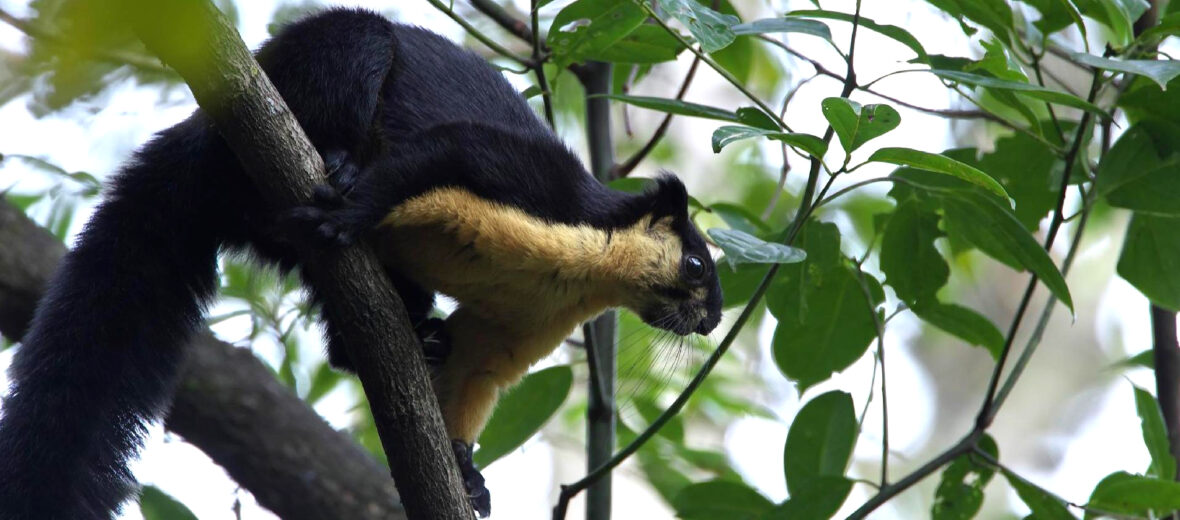
And the largest known squirrel in the world title goes to… the black giant squirrel. These large critters take up residence in the subtropical and tropical coniferous and broadleaf forests of Bhutan, northern Bangladesh, eastern Nepal, northeast India, southern China, Laos, Myanmar, Thailand, Malaysia, Cambodia, Vietnam, and western Indonesia. Due to hunting and habitat loss, the black giant squirrel is listed as Near Threatened by the IUCN.
First the Stats…
Scientific name: Ratufa bicolor
Weight: Up to 3.5 lbs.
Length: Up to 13 inches, plus a 17 inch long tail
Lifespan: Up to 18 years
Now on to the Facts!
1.) These huge squirrels are diurnal (active during the day).
2.) Like pretty much all other squirrels, they are arboreal (spend most of their lives in trees). They will occasionally venture to the ground to feed on fallen seeds and fruit.
3.) They typically stay in their forest home and seldom ever venture into towns or farms.
4.) Giant squirrels are solitary and only congregate in small groups during the mating season.
5.) Due to the lack of need, they do not hibernate.
But wait, there’s more on the black giant squirrel!
6.) Their diet consists of pine cones, seeds, fruits, nuts, and leaves.
7.) Not much is known of their breeding habits. It is assumed that they breed anywhere from March – August.
Did you know…?
During the last 10 years, these squirrels have seen a drop in numbers of 30%. This is due to timber harvesting, human settlements, agriculture, and over-hunting for meat.
8.) Females give birth to 1 – 2 young in a drey (nest).
9.) Gestation (pregnancy) lasts about 35 days.
10.) Mom nurses her young for up to 5 weeks.
But wait, there’s still more on the black giant squirrel!
11.) The black giant squirrel seldomly enters plantations or human inhabited lands, preferring the forest habitat instead. This could be due to the higher risk of human encounters and increased potential for death.
12.) Since they spend most of their lives in the canopies, these critters have evolved the ability to jump to to 19.69 feet, from branch to branch.
13.) Spending most of their time in the trees, these squirrels are able to avoid many ground based predators.
Now a Short Black Giant Squirrel Video!
Also, check out the Critter Science YouTube channel. Videos added frequently!
Want to suggest a critter for me to write about? Let me know here.



